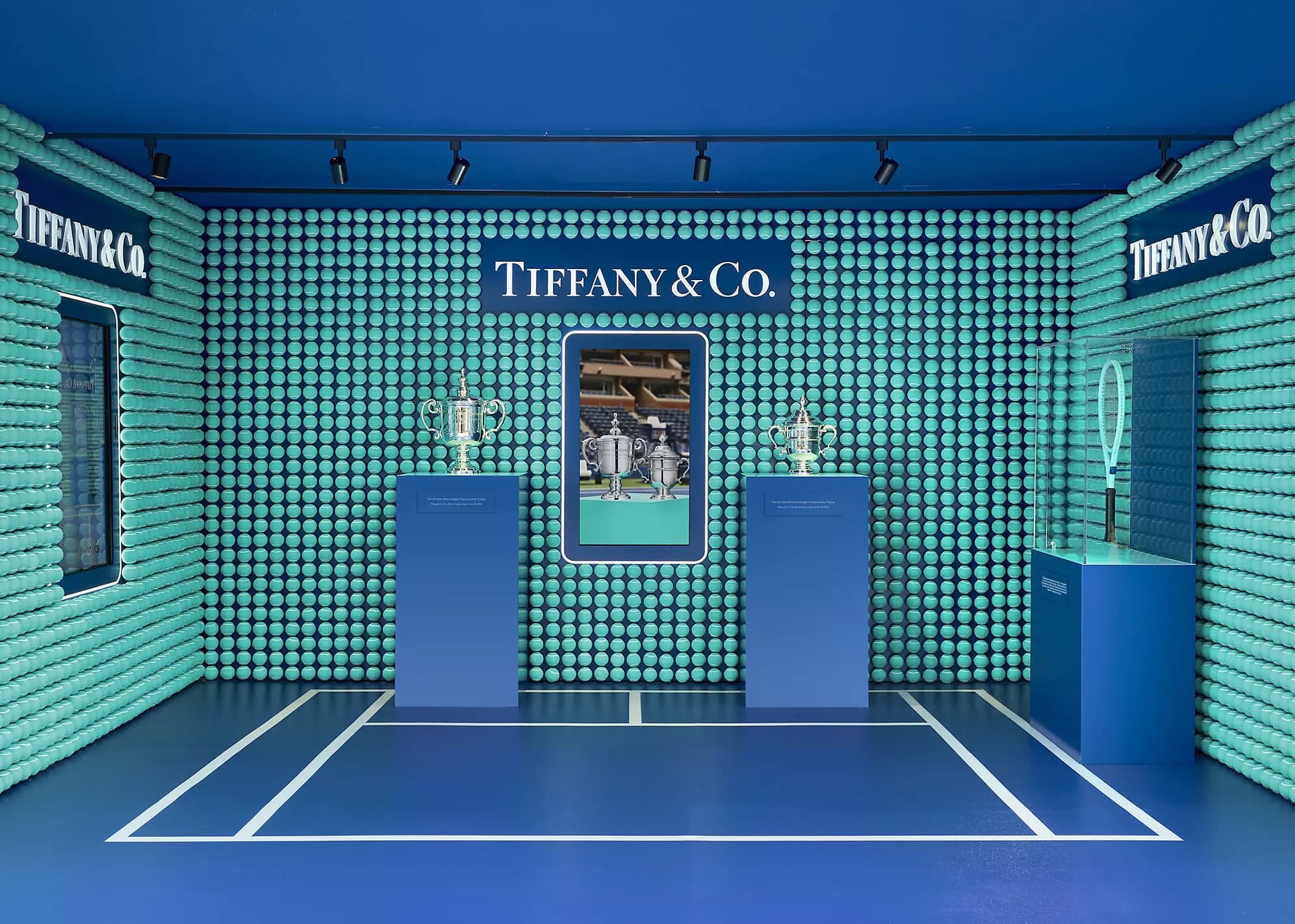TIFFANY & CO INTRODUCES DIGITAL DIAMONDS AND AR MIRROR AT US OPEN
At this year's US Open, attendees have the unique opportunity to engage with cutting-edge digital experiences created by Tiffany & Co., the renowned jewelry brand. Tiffany & Co. has collaborated with Snap, the company behind Snapchat, to introduce augmented reality (AR) elements to the tournament through a captivating AR mirror, which will be on display until September 10.
This initiative embodies several trends centered around the concept of accessibility. Firstly, it highlights how AR technology can offer enhanced access to luxury products, allowing consumers to virtually interact with high-end items. Secondly, the utilization of AR mirrors demonstrates how such mirrors can provide widespread access to engaging AR experiences. Finally, it underscores the enduring appeal of luxury brands' association with sports, showcasing how these brands continue to integrate sports into their marketing strategies.
Geoffrey Perez, Global Head of Luxury at Snapchat, commends Tiffany & Co.'s innovative use of Snap AR, emphasizing how it enhances brand engagement while preserving the brand's elevated status. Tiffany & Co. has been at the forefront of embracing AR technology. It was the first brand to leverage Snap's "ray tracing" technology, which enhances the realism and precision of digital objects by accurately portraying the play of light. In February, they used AR to enable customers to digitally try on and purchase their Lock bracelet. Additionally, they employed AR to enrich their archival exhibition at London's Saatchi Gallery, allowing visitors to virtually experience iconic pieces such as the yellow Tiffany diamond and a dazzling wall of diamonds. AR, which seamlessly integrates digital elements into the physical world, represents a practical application of metaverse technologies, expanding the potential of digital assets for brands, particularly in the realm of phygital experiences and products.
Snapchat boasts over 750 million monthly active users and recorded 397 million daily active users in the second quarter of the year, marking a 14% increase compared to the previous year. This immense user base demonstrates the reach and impact of AR experiences created on the platform.
The fashion and luxury industries have embraced AR technology, particularly during the pandemic, due to its practicality in bringing products into consumers' personal environments. More recently, brands have taken this a step further by using AR to enhance brand storytelling through location-based installations and remote experiences. For instance, Louis Vuitton extended its campaign with artist Yayoi Kusama by allowing people to visualize the campaign's vibrant polka dots on iconic global landmarks.
The US Open AR installation was developed using Snapchat's enterprise offering, AR Enterprise Services (Ares), which empowers brands to incorporate Snap's AR capabilities into their websites, apps, and physical locations, with a particular focus on AR shopping experiences. For instance, a brand can offer AR try-on features within its own app, making it accessible to customers without the need to download Snapchat or have a Snapchat account. This marks Tiffany & Co.'s first use of Ares, introduced in March.
This installation also marks Tiffany's inaugural use of a physical AR mirror. The latest generation of AR mirrors, a significant advancement from earlier smart mirrors used in retail, has rejuvenated the application of AR in the retail sector. Snapchat's AR mirrors, powered by Ares, include technology designed for physical screens. In addition to overlaying interactive digital elements onto consumers' reflections, these mirrors incorporate integrated cameras for capturing images. A notable advantage for both retailers and Snap is that consumers can easily experience the technology by simply approaching these mirrors, eliminating the need for a smartphone, app, or prior knowledge. This facilitates a range of AR effects, including brand storytelling, games, AR try-on experiences, and more. Several brands have already integrated AR mirrors into their storefronts, such as Coach, Nike, Men's Wearhouse, and Tommy Hilfiger, offering consumers various engaging experiences.
In the case of Tiffany's installation at the US Open, visitors can immerse themselves in the AR experience by participating in a digital volley, where they hit a virtual ball with a digital Tiffany racket. Participants can then save and share their content by scanning an on-screen QR code. It's worth noting that this AR experience is not linked to product promotion or shopping prompts. During the initial days of the US Open, users of the mirror represented a diverse range of age groups, showcasing its broad appeal.
Luxury brands have increasingly turned to sports as a platform for marketing opportunities, extending beyond tennis and into various sporting domains. For example, Gucci made waves at Wimbledon when a dress-code-violating Gucci duffle bag caught attention on the tennis court. In June, star athletes from basketball, racing, European football, tennis, and boxing attended fashion shows hosted by brands like Louis Vuitton and Prada. Notably, LVMH is set to sponsor the upcoming Olympic Games in Paris. Tiffany & Co.'s longstanding partnership with the United States Tennis Association began in 1987 when they started crafting the US Open singles and doubles trophies, demonstrating the enduring connection between luxury brands and the world of sports.
At the heart of our agency lies a dedicated team focused on Creative Intelligence, an inventive, imaginative, and interactive approach that transforms a brand's connection with its audience.


